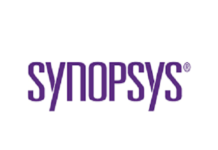
The financial industry is experiencing a massive wave of change over the last several years. Digital disruption has been truly disruptive to this industry. This includes cybercrime and operational activities. For instance, according to a joint 2017 Ponemon Institute and Accenture study (Cost of Cybercrime study: Insights on security investments that make a difference), the financial services industry suffers the most loss of any industry due to cybercrime with an annual loss of $18.28 billion. One recent example is the ATM Cashout attack that hit various banks and cost millions of dollars in cash lost. Loss of customer personally identifiable information continues as well, like the recent HSBC breach that was announced.
Many other security intrusions and breaches have also been successful across different financial industry segments. For instance, credit card companies have been hit with web-based attacks and on-line fraud and ransomware attacks are affecting all industry segments.
The disruption is not only about security breaches though. New technology is causing disruptions. Here are just some of the examples:
- Insurance companies are rushing to cloud computing to meet growing demands to support new customer applications and services
- Financial trading companies are moving to acquire instantaneous access to market feeds and thereby gain a competitive edge as stock prices change
- And multiple financial segments are interested in supporting newer technology to support mobile centric customers
Who is really being affected though? While multiple segments of the financial industry are being affected, here are some clear examples of some of the challenges:
- Banking – Is facing a stronger focus on customer centricity, mitigating cyber risk, new technology management, staying competitive with FinTech’s, and regulatory recalibration
- Insurance companies – Modernization and automation initiatives (like cloud computing) to meet business demands have created network monitoring and security issues
- Credit card companies – This entity has been hit with a significant number of web-based attacks and on-line fraud that is increasing costs and risk
- Financial trading companies – Competition has forced trading companies to become more dependent on instantaneous access to market feeds, before stock prices change
The next question is how to respond, i.e. what is the best defense against the massive wave of change? This is where the old adage that “the best way to fight fire is with fire” can be very useful.
Network visibility is an example of a high-tech solution to new technology disruption. Network visibility is about placing components like physical taps, virtual taps, network packet brokers, and special purpose security and monitoring tools into the network at key strategic points.
These network visibility components and techniques can be used to overcome the challenges stated above for financial businesses. This is because enhanced network visibility gives you the capability you need to: eliminate blind spots, decrease troubleshooting and monitoring costs, improve operational efficiency, and enhance compliance data.
Here are a few examples of what network visibility solutions can do to counter the digital disruption threat:
- Remove on-premises blind spots – Basically you install physical taps and network packet brokers to get better access to monitoring data anywhere you need it across the network
- Increase monitoring efficiency – The packet brokers can be deployed to remove duplicate traffic and filter the remaining traffic so that monitoring tools only receive relevant traffic
- Mitigate cyber risk – Threat intelligence gateways, inline security tools, and integrated SSL/TLS decryption solutions can be added to improve security threat response
- Reduce tool costs – Network packet brokers can load balance and aggregate data to reduce the number of security and monitoring tools (appliances) used for on-premises, cloud or hybrid networks
- Improve network reliability – Inline external bypass switches can be added in front of inline appliances to eliminate single points of failure within the network
- Enhance customer experience – Application intelligence within an NPB can deliver key NetFlow-based data to improve application management and troubleshooting
- Enhance compliance activities – For virtual data centers (VDC), a virtual tap can access east-west data and then export the data to physical tools for a complete network view

In the end, data visibility solutions that are simple to implement and that don’t create more complexity are what will be required to propel the financial industry past the current wave of digital disruption being propagated within this market segment.

















